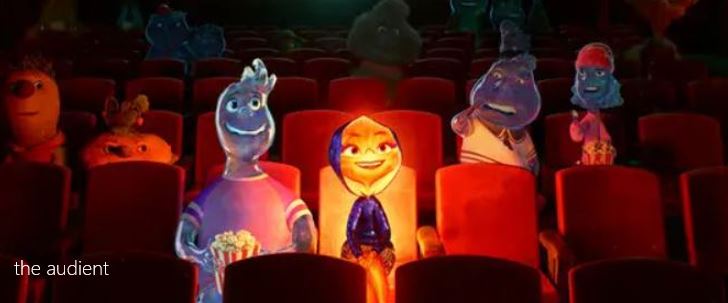
This is the final movie I will be reviewing as part of my Movie Diet.
There's a moment early in the first act of A Dangerous Method when Carl Jung (Michael Fassbender) returns from, well, somewhere, and he comes into the room of his patient, Sabina Spielrein (Keira Knightley), to announce said return. "I'm back!" he says, then promptly pokes each fist into each thigh and poses, elbows bent, like Superman might do.
I released an inventory guffaw at the clumsiness of it all.
This was, mind you, after 15 full minutes of Knightley giving some of the most misguided overacting you've ever seen. More concisely, it was after 15 full minutes of Knightley doing this:
So, chalk it up as another failure for David Cronenberg, whose next (and most recent) picture, Cosmopolis, would become my least favorite film of 2012. Right?
Not so fast.
Despite the metaphorical arm-crossing that occupied me for that dreadful opening act, A Dangerous Method was saved by an unlikely source: Viggo Mortensen. It's not that I don't like Mortensen, it's that his pairing with Cronenberg in particular was a huge flop for me back when A History of Violence was released. I didn't expect for his Freud to be this film's saving grace, but it absolutely was. While Fassbender, who people usually stumble over themselves praising, was giving an utterly ordinary performance, Mortensen showed me a side of himself I have never seen.
The three above characters are thrown together in a conflict of ideas and principles brewing among European psychoanalysts of the pre-World War I period. Freud was the thinker whose linking of sexuality and neurosis had taken both his field and the world by storm; Jung was his disciple, though one who soon proved to have his own ideas. Though using some of Freud's techniques to cure a highly disturbed patient (Spielrein) of a serious brain malady that originated in her own sexual abuse at the hands of her father, Jung soon decides that Freud's approach to psychoanalysis is far too rigidly entrenched in sexuality. Jung wants to do more than merely diagnose his patients, but rather show them a better way to be, and begins basing his philosophies on the interpretation of symbols from his dreams. Freud disagrees entirely with this approach, thinking it a kind of witchcraft, while Jung suspects that Freud only wants slavish devotees and not thinkers who will challenge his assumptions. The men begin distancing themselves from each over a series of increasingly cool encounters. Meanwhile, the cured Spielrein has her own ambitions to go into psychoanalysis, but presents a temptation to Jung after Jung's monogamous world view is challenged by another psychiatric mind in his care, Otto Gross (Vincent Cassel). Allowing his own mind to be opened the way Freud would not, Jung considers an affair with Spielrein, even as his wife is continuing to bear him children.
Though Freud is certainly rigid and Mortensen surely plays him rigidly, that's a far cry from the rigidity of this film's execution prior to when Mortensen comes on the scene. Yet somehow, as though the film were being soothed by the calming hand of an actual mentor, Mortensen instantly brings a certain class and order to a film that spends its first 25 minutes flying every which way. There's something masterful about the refined egotism that Mortensen brings to the world's most famous psychoanalyst, which lends a sense of irony to the fact that his theories all revolve around humanity's basest instincts. He's so dispassionate and above-the-fray that you can't help trust and believe every word that comes out of his mouth ... even if Jung's approach to analyzing dreams is the more hopeful of the two.
Everything that's good about A Dangerous Method is contained in the regrettably few scenes between Freud and Jung, but so good are those scenes that they really do elevate the rest of the material. And most of the rest of that material relates to a love triangle between not Freud, Jung and Spielrein, as the advertising for this film suggests, but between Jung, Spielrein and Jung's wife (Sarah Gadon). Gadon also gives an uninteresting performance as the passive Emma Jung, so there's little spark to the scenes that involve Jung working out his feelings toward the two women. Knightly eventually begins giving a more measured performance than in the opening minutes, but once her keel is even, she commits the opposite sin of becoming boring.
In fact, the whole film suffers from an energy drain that would have been fatal if it weren't for Mortensen and another actor I'll mention in a moment. A Dangerous Method is composed primarily of talking head scenes, and as such, seems to lack urgency. It regularly skips ahead in time with little warning or ultimate purpose, the most unfortunate of these circumstances being a trip to America by Jung and Freud that ends abruptly as they are entering the harbor and seeing the Statue of Liberty. If anything of interest happened on that trip, we the audience would have no idea about it.
In addition to the engrossing tete-a-tete scenes between the two giants of psychoanalysis, there is one other actor here who holds our interest. That's Vincent Cassel as the sex-addicted doctor who is sent by his father to be treated by Jung. Cassel does a version of what Mortensen does right here -- he speaks his philosophies so confidently and so convincingly that you can't help but be seduced by his reasoning, even if it's often abhorrent. He presents rationalizations for polygamy that might make a reasonable person, one who abides by traditional laws of sexual propriety, wish they could be so self-actualized. Which is quite a seductive trick indeed.


No comments:
Post a Comment